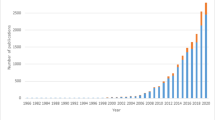Abstract
Historical appraisals of dance/movement therapy (DMT) generally present a view that the profession’s development occurred roughly simultaneously in quite different directions on the East coast and the West coast of the United States. The author, whose formative training was with Marian Chace in Washington, DC, and elsewhere, examines this origin myth from a new perspective. Having been invited in 2016 to join with a number of California-based dance/movement therapists on a panel on Jungian theoretical approaches to DMT (widely considered a quintessentially West coast paradigm), the author recalled an event that foreshadowed this panel presentation at the annual conference of the American Dance Therapy Association (ADTA). Her resulting narrative looks back at a West coast visit that she made as ADTA president in 1972, and her encounter then with sister dance/movement therapists there. She charts several levels of interaction between the two “coastal” approaches, along with significant and illuminating correspondences organizationally and theoretically, which she indicates continue to the present day. Sharing her reflections on the profession at these two distinctive points—in 1972 and in 2016—is meant both to preserve this history and to highlight commonalities across DMT, ideally enabling integration of pivotal aspects of the profession’s core knowledge.
Similar content being viewed by others
References
Bion, W. R. (1961). Experiences in groups. London: Tavistock.
Chace, M. (1993). Dance therapy for adults. In S. Sandel, S. Chaiklin, & A. Lohn (Eds.), Foundations of dance/movement therapy: The life and work of Marian Chace (pp. 256–260). Columbia, MD: Marian Chace Memorial Fund of the American Dance Therapy Association.
Sullivan, H. S. (1953). The interpersonal theory of psychiatry. New York: W.W. Norton.
Author information
Authors and Affiliations
Corresponding author
Ethics declarations
Conflict of interest
This author declares there is no conflict of interest to report.
Rights and permissions
About this article
Cite this article
Chaiklin, S. Connecting the Practice of Dance/Movement Therapy: What Differentiates Us?. Am J Dance Ther 39, 142–147 (2017). https://doi.org/10.1007/s10465-017-9253-5
Published:
Issue Date:
DOI: https://doi.org/10.1007/s10465-017-9253-5




